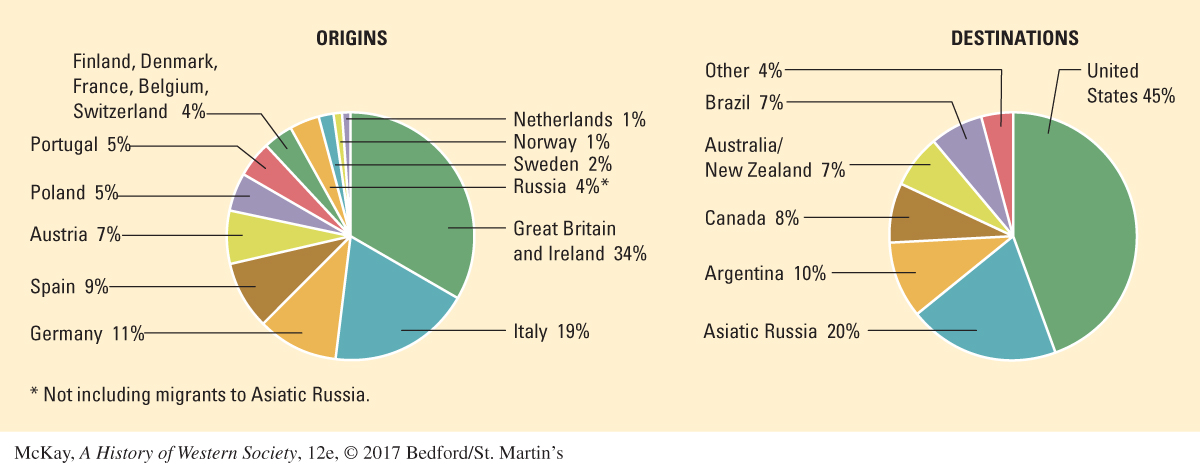A History of Western Society: Printed Page 799
A History of Western Society, Value Edition: Printed Page 769
A History of Western Society, Concise Edition: Printed Page 799
The Pressure of Population
In the early eighteenth century European population growth entered its third and decisive stage, which continued unabated until the early twentieth century. Birthrates eventually declined in the nineteenth century, but so did death rates, mainly because of the rising standard of living and the revolution in public health (see Chapter 22). During the hundred years before 1900 the population of Europe (including Asiatic Russia) more than doubled, from approximately 188 million to roughly 432 million.
These figures actually understate Europe’s population explosion, for between 1815 and 1932 more than 60 million Europeans left the subcontinent. These emigrants went primarily to the rapidly growing neo-
The growth of the European population provided further impetus for Western expansion, and it drove more and more people to emigrate. As in the eighteenth century, the rapid increase in numbers in Europe proper led to land hunger and relative overpopulation in area after area. In most countries, emigration increased twenty years after a rapid growth in population, as children grew up, saw little available land and few opportunities, and departed. This pattern was especially prevalent when rapid population increase predated extensive industrial development, which offered the best long-
Before looking more closely at the people who emigrated, consider these three facts. First, the number of men and women who left Europe increased rapidly at the end of the nineteenth century and leading up to World War I. As Figure 24.2 shows, more than 11 million left in the first decade of the twentieth century, over five times the number departing in the 1850s. Thus large-

Second, different countries had very different patterns of migration. People left Britain and Ireland in large numbers from the 1840s on. This outflow reflected not only rural poverty but also the movement of skilled industrial technicians and the preferences shown to British migrants in the overseas British Empire. Ultimately, about one-
Third, although the United States did absorb the largest overall number of European emigrants, fewer than half of all these emigrants went to the United States. Asiatic Russia, Canada, Argentina, Brazil, Australia, and New Zealand also attracted large numbers, as Figure 24.3 shows. Moreover, immigrants accounted for a larger proportion of the total population in Argentina, Brazil, and Canada than in the United States. The common American assumption that European emigration meant immigration to the United States is quite inaccurate.
